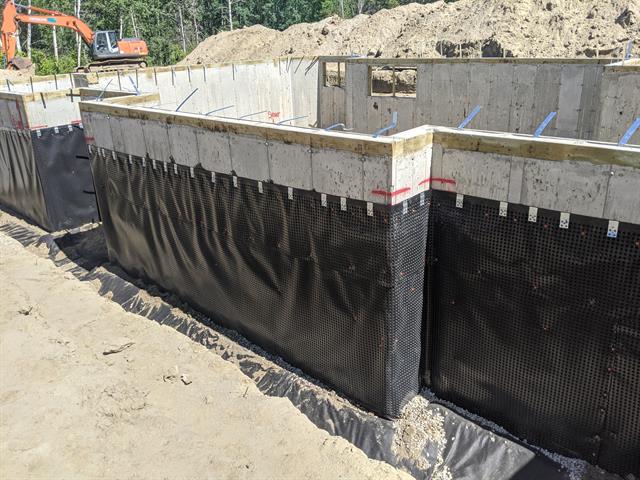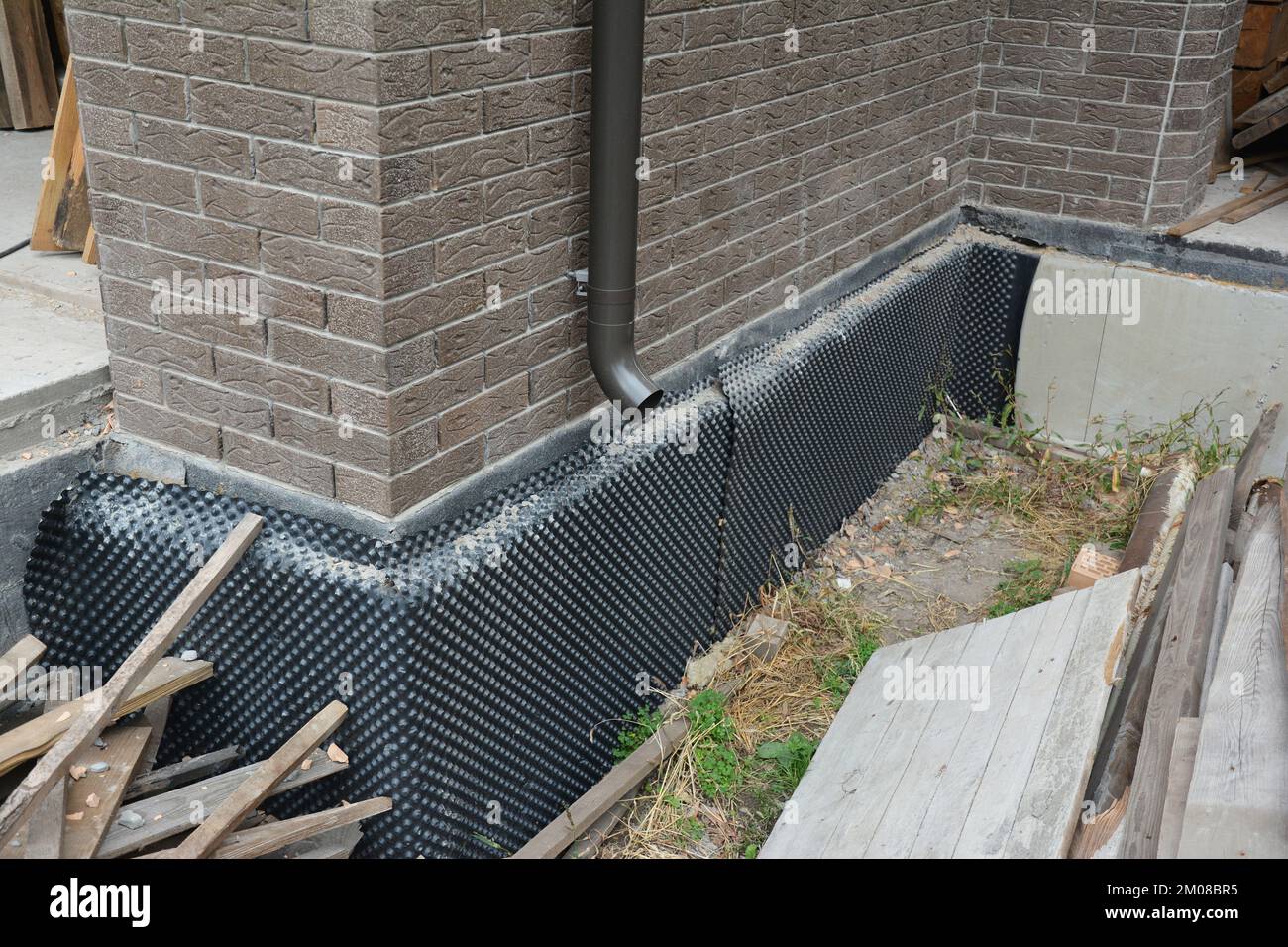Solving condensation problems permanently with mould treatment newcastle
Checking Out the Numerous Techniques and Solutions for Effective Damp Proofing
Dampness in structures presents substantial difficulties to both architectural integrity and interior air quality. Numerous techniques and remedies have emerged to fight this prevalent problem. From typical damp-proof membrane layers to innovative chemical therapies, each technique offers special advantages. Understanding these options is important for effective wetness control. Choosing the appropriate service depends on certain building conditions and needs, triggering additional exploration right into the most efficient wet proofing strategies offered.
Understanding the Sources Of Wetness
Dampness can arise from numerous resources, recognizing these reasons is essential for reliable remediation. Commonly, moisture stems from three key resources: increasing moist, passing through moist, and condensation. Climbing moist takes place when groundwater takes a trip upwards through porous materials, such as brick or rock, commonly due to an absence of an efficient barrier (damp specialist newcastle). Permeating wet is commonly brought on by exterior factors, including roof leakages, malfunctioning seamless gutters, or harmed walls, allowing water to infiltrate a property. Condensation, on the various other hand, results from excess dampness airborne, often intensified by bad air flow and temperature level distinctions, leading to water beads basing on surfaces. Recognizing these underlying problems is vital, as each sort of moisture calls for a tailored approach for removal. Correct analysis aids in identifying the most effective remedies, eventually guarding the structural honesty of a building and improving indoor air top quality
Typical Damp-Proof Membrane Layers

Chemical Damp-Proofing Solutions
Chemical damp-proofing services provide a cutting-edge approach to avoid dampness invasion in buildings. These techniques normally include the application of fluid chemicals that penetrate stonework and create an obstacle versus rising wet. Frequently used chemicals include silanes, siloxanes, and other water-repellent agents that respond with surface products to develop a hydrophobic layer.The application procedure usually requires boring openings into the walls, injecting the chemical option, and enabling it to heal. This technique is specifically beneficial for older frameworks where conventional damp-proof membrane layers might be not practical. Furthermore, chemical damp-proofing can be much less turbulent and more economical than extensive renovation projects.While efficient, these remedies depend on correct application and environmental problems for peak efficiency. Normal upkeep and surveillance are important to assure the longevity of the damp-proofing therapy. Overall, chemical damp-proofing represents a functional alternative for safeguarding structures against moisture-related damage
Tooth Cavity Wall Surface Building And Construction Strategies
Tooth cavity wall surface construction strategies use many advantages, particularly in wetness control and power effectiveness. By integrating an air void between 2 layers of stonework, these wall surfaces efficiently minimize water access while boosting insulation. This mix not only safeguards frameworks from dampness however additionally adds to minimized energy consumption.
Benefits of Cavity Wall Surfaces
When thinking about efficient moist proofing techniques, the advantages of dental caries wall surfaces attract attention prominently. Cavity walls are composed of 2 different layers, producing an air space that efficiently decreases wetness infiltration. This style reduces the risk of moisture, as the outer wall surface functions as a barrier against rainfall and water ingress. Additionally, cavity walls improve thermal insulation, which adds to energy effectiveness by lowering warmth loss. They also give audio insulation, helping to develop a quieter indoor atmosphere. Moreover, the air void enables for ventilation, which aids in wetness control and lowers the likelihood of mold and mildew growth. These advantages not only enhance the total convenience of a building but likewise add to its durability and structural integrity.
Dampness Control Methods
Reliable dampness control approaches are important in cavity wall surface building to assure long-term security against moisture. One main approach includes the consolidation of weep holes, which facilitate water drainage from the tooth cavity, avoiding accumulation. In addition, the use of breathable membrane layers can assist handle moisture levels while enabling trapped vapor to leave. Correct placement of insulation is likewise critical, as it should not obstruct water drainage courses. Moreover, making sure that the external fallen leaves of the tooth cavity wall surface are created with water-resistant materials boosts overall toughness. Regular upkeep checks are necessary to identify any kind of obstructions or damages early, protecting the structure's stability. Eventually, a mix of these methods develops a robust defense against dampness breach in tooth cavity walls.
Insulation and Energy Performance
Insulation plays an essential role in enhancing power performance within dental caries wall construction. By integrating shielding materials, these walls develop a thermal barrier that minimizes warmth loss and minimizes power intake. Reliable insulation not just aids keep a steady interior temperature yet likewise reduces the risk of dampness, as it protects against condensation within the wall cavity. Numerous techniques, such as the use of stiff foam boards or mineral woollen, can be used to accomplish excellent insulation efficiency. In addition, proper installation is necessary to assure that voids and spaces are minimized, which can or else endanger power efficiency. Ultimately, a well-insulated dental caries wall surface adds significantly to overall sustainability and lowers cooling and heating expenses for house owners.
Exterior Damp Proofing Approaches
Outside damp proofing methods are important for shielding frameworks from moisture infiltration. 2 reliable methods include the application of waterproof membrane layers and the installment of French drains. These options help mitigate water buildup and maintain the integrity of structures.
Waterproof Membrane Layer Application
While numerous techniques exist for preventing moisture access, the application of water-proof membranes stays a very effective external damp proofing technique. These membranes are commonly made from products such as polyethylene, rubber, or changed bitumen, providing a robust barrier versus water infiltration. The setup process involves applying the membrane to the external surfaces of wall surfaces or foundations, guaranteeing full coverage to avoid leaks. Proper bond and sealing at joints are important to making best use of effectiveness. Water-proof membranes can be used in different kinds, consisting of fluid layers and sheet membranes, permitting adaptability based on the particular requirements of the framework. This method not just shields buildings from dampness however also improves their durability and architectural integrity.
French Drainpipe Setup
One efficient method for managing groundwater and protecting against wetness build-up around a structure's foundation is the installment of a French drain. This drainage system contains a trench filled with gravel click here and a perforated pipeline that reroutes surface water far from the foundation. Correct setup requires cautious preparation, guaranteeing that the drain slopes away from the framework to facilitate perfect water circulation. Additionally, the place of the drainpipe is essential; it needs to be placed in locations vulnerable to merging or excess wetness. Routine upkeep, consisting of clearing debris from the gravel and making certain the pipeline stays unhampered, is vital for long-term effectiveness. Ultimately, a well-installed French drainpipe can significantly lower the risk of water-related problems in basements and foundations.
Inside Waterproofing Techniques
Inside waterproofing techniques are crucial for securing a building's inside from wetness seepage and prospective water damages. These techniques usually involve the application of specialized materials and techniques created to develop a moisture obstacle within the framework. One common approach is using water resistant layers or sealants on wall surfaces and floorings, which stop moisture from passing through surfaces.Additionally, mounting indoor water drainage systems, such as sump pumps, can successfully handle water build-up in basements and crawl spaces. Another technique includes using vapor obstacles, which are installed to hinder moisture movement from the ground into living spaces.Moreover, resolving any cracks or voids in walls or structures with ideal sealers assures a complete protection against water intrusion. By executing these indoor waterproofing techniques, building owners can substantially lower the danger of mold and mildew development, architectural damages, and other moisture-related concerns. Correct execution of these strategies is crucial for lasting protection and building stability.
Regular Maintenance and Inspection Practices
Regular upkeep and evaluation methods are important for guaranteeing the long-lasting efficiency of wet proofing services in any structure. Routine checks enable residential or commercial property proprietors to determine early indicators of wetness invasion, such as peeling paint, mold and mildew growth, and mildewy odors. These signs can signify underlying issues that need instant attention.Inspections should be performed at the very least yearly, concentrating on at risk locations like cellars, crawl rooms, and outside wall surfaces. Throughout these assessments, homeowner need to take a look at sealers, drainage systems, and ventilation to validate they operate correctly.Additionally, maintaining downspouts and seamless gutters is crucial, as blocked systems can bring about water buildup near the foundation. Executing a regular maintenance schedule, along with prompt repair services, can substantially expand the life-span of damp proofing actions and protect the architectural integrity of the structure. Aggressive steps inevitably contribute to the overall health and wellness of the living atmosphere.
Frequently Asked Questions
How Lengthy Does Damp Proofing Usually Last?
The period of damp proofing effectiveness varies, generally lasting between 20 to half a century. Variables such as application high quality, ecological conditions, and upkeep techniques significantly affect the durability of the wet proofing treatment.

Can I Damp Evidence My Home Myself?
The private contemplated the feasibility of DIY damp proofing. With appropriate study and the right products, it is possible. Nevertheless, they also acknowledged the significance of specialist guidance to assure long-lasting performance and prevent future concerns.
What Are the Signs of Ineffective Damp Proofing?
Indications of inadequate damp proofing include consistent stuffy odors, noticeable mold and mildew development, peeling paint, wet patches on wall surfaces, and timber decay - damp specialist newcastle. Property owners need to address these concerns without delay to avoid additional damage and wellness worries
Does Damp Proofing Affect Indoor Air Top Quality?

Just How Much Does Expert Damp Proofing Expense?
Specialist damp proofing prices vary significantly, commonly ranging from $1,000 to $5,000 relying on the building's dimension, the extent of the moist concern, and chosen approaches. Each situation needs a tailored evaluation for exact pricing. Typically, dampness originates from 3 main sources: rising moist, penetrating moist, and condensation. When taking into consideration effective moist proofing methods, the benefits of cavity wall surfaces stand out prominently. Outside wet proofing approaches are essential for securing frameworks from dampness infiltration. While various methods exist for preventing moisture ingress, the application of waterproof membrane layers remains a highly efficient external damp proofing technique. Signs of ineffective damp proofing include relentless musty odors, noticeable mold and mildew development, peeling off paint, damp spots on wall surfaces, and timber decay.